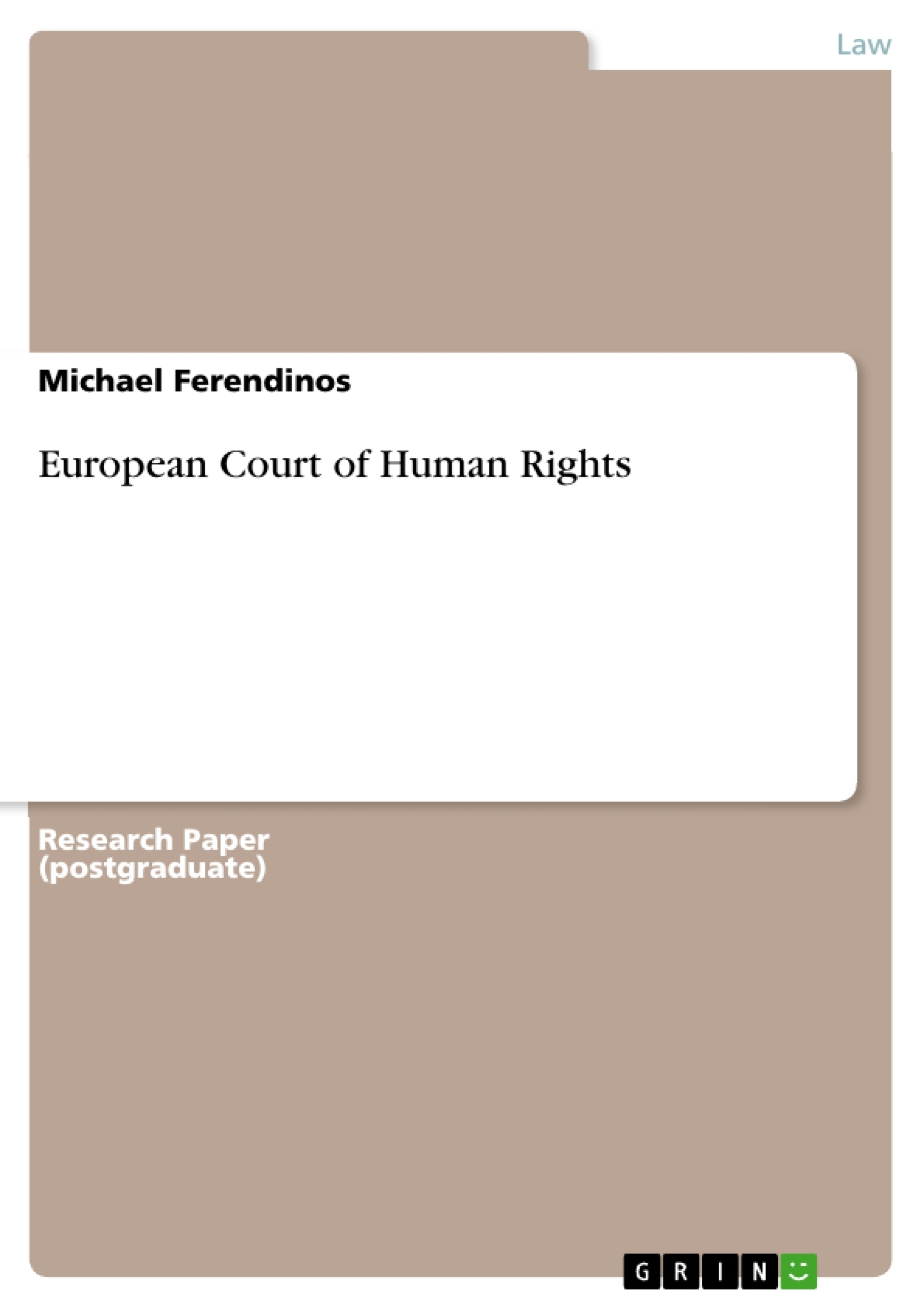This paper will assess the legal impact of the European Court of Human Rights (ECHR) regionally and on the international level. An overview of the Court will be provided initially, followed by an analysis of how it functions. The final section will look at its international influence, whilst using a case study to provide a clear illustration of the authority that the Court wields. The landmark judgment in the Cyprus v. Turkey case in May 2001 will be discussed.
Inhaltsverzeichnis (Table of Contents)
- Introduction
- The Court
- Constituting treaty
- Mandate
- Functioning
- Composition and structure
- Procedure
- Effect on international law
- Case study: Cyprus v. Turkey
Zielsetzung und Themenschwerpunkte (Objectives and Key Themes)
This paper assesses the European Court of Human Rights' (ECHR) legal impact regionally and internationally. It provides an overview of the Court's functioning and analyzes its international influence, using a case study to illustrate its authority.
- The legal impact of the ECHR
- The functioning of the ECHR
- The international influence of the ECHR
- The ECHR's role in safeguarding human rights
- Analysis of the Cyprus v. Turkey case
Zusammenfassung der Kapitel (Chapter Summaries)
Introduction: This section introduces the paper's aim to assess the ECHR's legal impact and outlines the structure of the analysis.
The Court: This section details the ECHR's establishment in 1959, based on the Convention for the Protection of Human Rights and Fundamental Freedoms. It discusses the Court's mandate to implement and safeguard civil and political rights.
Constituting Treaty: This section explains the Convention's creation in 1950, its role in enforcing human rights, and the establishment of the European Commission of Human Rights, the European Court of Human Rights, and the Committee of Ministers.
Mandate: This section describes the ECHR's mandate to handle cases brought by individuals, organizations, and states against other states bound by the Convention, highlighting the evolution through various protocols, especially Protocol No. 11 and its impact on caseload management.
Functioning: This section explains the Court's functioning since the implementation of Protocol No. 11 in 1998, emphasizing its role in screening applications and the judicial nature of the Convention process.
Composition and structure: This section details the Court's composition of 46 judges, their election process, and the structure of sections and the Plenary Court's responsibilities.
Procedure: This section describes the Court's procedures, focusing on the roles of Chambers and the Grand Chamber in handling cases.
Schlüsselwörter (Keywords)
European Court of Human Rights (ECHR), international law, human rights, Convention for the Protection of Human Rights and Fundamental Freedoms, Protocol No. 11, case study, Cyprus v. Turkey, civil and political rights, regional and international impact, judicial procedure.
- Quote paper
- M.A. Michael Ferendinos (Author), 2008, European Court of Human Rights, Munich, GRIN Verlag, https://www.grin.com/document/122887



